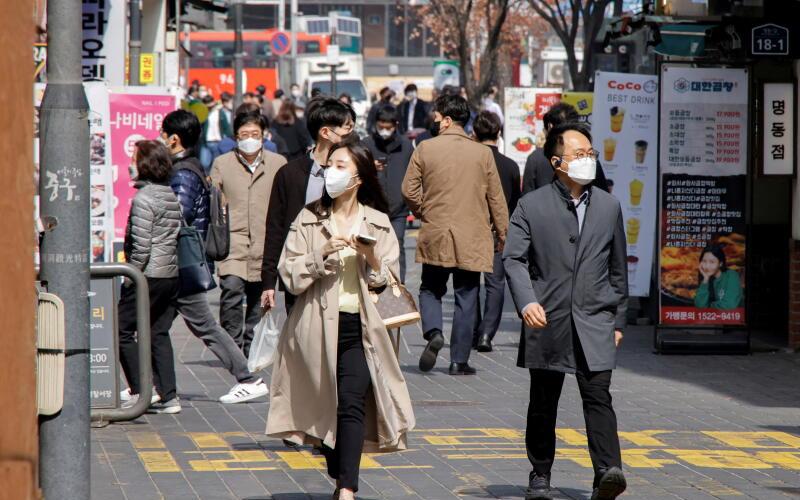
According to Reuters statistics, more than 1 million crown disease confirmed cases are added every two days.South Korea's single -day notification case is the most worldwide, and each four new cases are from South Korea.In addition, since this year, China has notified more than 45,000 new cases, more than last year.
(London / Washington Composite Electric) The crown disease in Asian countries has rebounded again due to the rapid spread of BA.2, the Amikon subtype of BA.2. As of Wednesday, the cumulative cases of coronary disease in Asia have broken 100 million.
According to statistics from Reuters, more than 1 million crown disease confirmed cases are currently added every two days.Affected by BA.2, cases in Asian countries such as South Korea, China, Vietnam have recently risen rapidly.
Among them, South Korea's single -day notification case is the world's most, and each four new cases are from South Korea.
Although the number of infection cases in South Korea has become stable since early March, the average daily death cases are still more than 300, which prompts the authorities to order the national crematorium to extend the operating time.
China is also the worst wave of epidemic since the popularization of the popularity.In order to curb the spread of viruses, Shanghai has been divided into seal control measures since the week.Since the beginning of this year, China has notified more than 45,000 new cases, more than last year.Ninety percent of China has completed the vaccine vaccination, but there are fewer elderly people who have added additions, making them vulnerable to second -degree infection.
China has still adhered to the crown disease zero policy, but in the face of more contagious variant strains, foreign experts generally question the effects of blocking measures.Esteman, a biological statistical expert at the University of South Australia, said: From the situation of Australia and other parts of the world, it can be clearly seen that the blockade is ineffective for Omikon, so it is foreseeable that a major epidemic will occur.
The United States approves the second dose to add the second dose to the age of 50 and over the age of 50
So far, the crown cases reported by Asia account for about 21%of global cases.India is the most affected Asian country affected by the epidemic. A total of 43 million cases have been diagnosed, which adds up more than cases in Japan, South Korea, and Vietnam.
In addition to Asia, BA.2 is also raging in Europe and the United States and other regions.According to the World Health Organization, BA.2 now accounts for nearly 86%of all gene sequencing cases.There is no evidence that BA.2 will cause severe illness, but its infectivity is higher than that of other previous strains, and the effectiveness of the vaccine on this subtype of this subtype also seems to be lower.
In order to strengthen the protection of high -risk groups, the US Food and Drug Administration (FDA) revised the crown disease vaccine on Tuesday and approved the second dose of Pfizer or Modner vaccine for those who were 50 years old and over immunity.Adding agents; the injection time of the two doses must be at least four months apart.
The latest estimation of the US government shows that BA.2 has accounted for more than half of the new cases in the United States.In the past seven days, the average daily increase in the United States has increased by about 27,000 cases, and the average daily illness has been 690.
The Minister of Health of the EU member states also urged the EU to vaccine the fourth dose of crown disease at the age of 60 at a meeting on Tuesday.Germany Health Minister Laitbach warned: We must not forget that European crown disease has not yet ended, and the number of cases in our cases is large, and the number of deaths is high.
Lautbach pointed out that the European Union must formulate a strategy of vaccination for vaccination as soon as possible, and do not take action until the vaccine applied to Omikon, because this may need to wait until September.He quoted a research result in Israel that the risk of infection of the elderly who infected the second dose of Pfizer's additional agent was 78%lower than that of the elderly with only one dose of additional doses.




